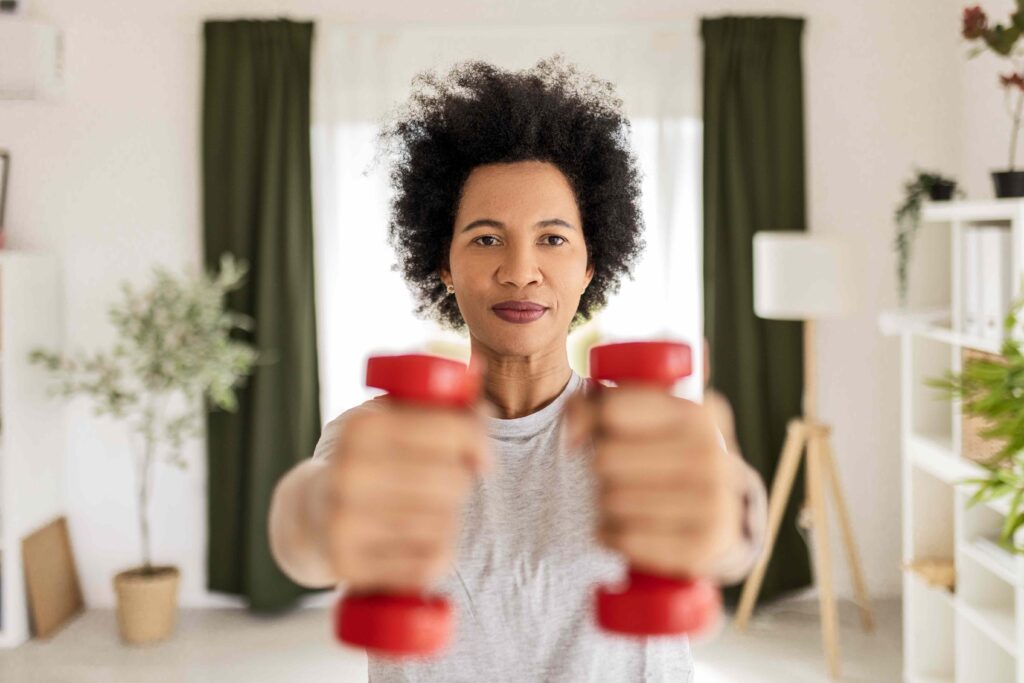Bone density refers to how much calcium and other minerals make up your bones. When your bones have more minerals, they have a higher bone density, meaning they’re stronger and less likely to break.
Low bone density can lead to osteoporosis, a permanent change in the structure and strength of your bones.
Weight-bearing exercises, which require your muscles to work against gravity, can help improve your bone density. These exercises put pressure on your bones, stimulating bone growth.
Walking is a low-impact, weight-bearing exercise that can benefit your bone health. How you walk may make a difference, with faster walking being more effective.
For example, one study followed people who had gone through menopause, which causes a higher risk of osteoporosis due to lower levels of the hormone estrogen. The study found that taking brisk walks for 30 minutes per day at least three days per week could help reduce bone loss and improve bone health. Walking at a slower pace may not improve bone density.
Dancing is another weight-bearing exercise that offers a combination of both cardiovascular (aerobic) and strengthening moves.
Research suggests dancing can improve bone density. One study found that people with low bone density who participated in a regular aerobic dance program three times per week experienced higher bone density measurements after 24 weeks. They also had a lower risk of fractures and falls.
To find the right dance class or program for you, focus on one that keeps you moving the entire time. For example, Zumba may be a good option. You can also ask your healthcare provider for recommendations.
Resistance training involves adding resistance to movement using free weights, weight machines, or resistance bands.
Adding resistance during exercise increases the stress on your muscles and bones, requiring them to work harder. This type of training signals to the bones that they need to strengthen at a faster rate and improves bone density.
Experts recommend that all adults engage in at least two sessions of muscle-strengthening workouts per week. To get started with resistance training, consider booking a session with a personal trainer at a local gym. Start with light weights and work your way up.
Bodyweight exercises are another type of resistance training. Instead of using free weights, machines, or resistance bands, your bodyweight provides the resistance.
Pushups and pullups are examples of bodyweight exercises. Routines such as yoga and Pilates can also be beneficial. However, if you already have low bone density, it may be important to avoid bending or twisting poses.
Balance training is any exercise that improves your balance. It may not increase your bone density, but it’s important to incorporate into your exercise routine to reduce the risks of low bone density.
For example, balance exercises can help lower the risk of falls, a common cause of fractures and bone breaks in people with osteoporosis or low bone density. Research suggests that participating in a regular balance training program may also help reduce the fear of falling and improve quality of life.
Examples of balance training exercises include walking on an unstable surface, walking backward, and walking in lunges. Tai chi is a form of exercise that involves slow, gentle movements and balancing poses. Research has found that this exercise may help improve balance and reduce the risk of falls in older people.
Recommendations for which exercises to do and how often to do them can vary by your age group.
Most people naturally lose bone density and muscle mass as they age. Older adults are at higher risk of osteoporosis than young adults and children. Daily exercise is a powerful way to improve both bone and muscle health and lower the risk of fractures.
Experts recommend the following exercise guidelines by age group and other factors:
- Adults: 150 minutes of moderate-intensity exercise or 75 minutes of vigorous-intensity exercise per week, plus muscle-strengthening exercise twice per week
- Older adults: 150 minutes of exercise per week, including cardiovascular workouts, balance training, and muscle strengthening
- Pregnant people: 150 minutes of moderate-intensity exercise per week
- Adults with chronic health conditions or disabilities: 150-300 minutes of moderate-intensity exercise or 75-150 minutes of vigorous-intensity exercise per week
- Young children (ages 3-5): Physical activity through play throughout the day, every day
- Children and adolescents (ages 6-17): One hour of physical exercise every day
It’s important to talk with a healthcare provider before starting a new exercise regimen.
If you have low bone density, you should also avoid any exercises that could raise your risk of fractures (bone breaks). People at risk of osteoporosis may need to avoid the following types of exercise:
- Jumping
- Running
- Jogging
- Any twisting or demanding yoga poses
Bone density is a measurement of how dense or strong your bones are. Bone density and muscle mass tend to decrease as you age, but you can help improve your bone density with exercise.
Focus on exercises that require your muscles and bones to work against gravity. Examples include brisk walking, dancing, and resistance training using equipment or your own bodyweight.
If you have low bone density or osteoporosis, talk with a healthcare provider about which exercise programs are safe for you.


